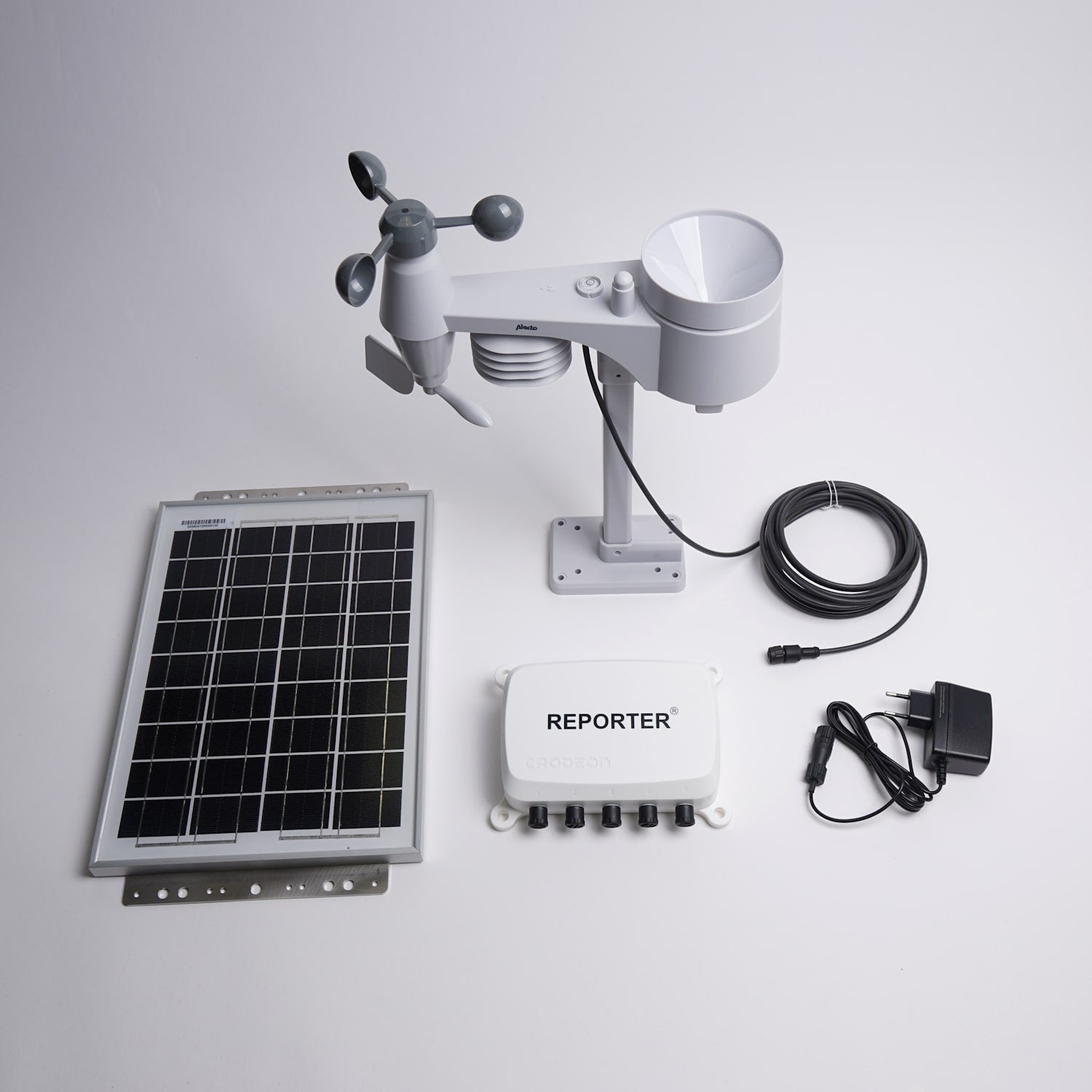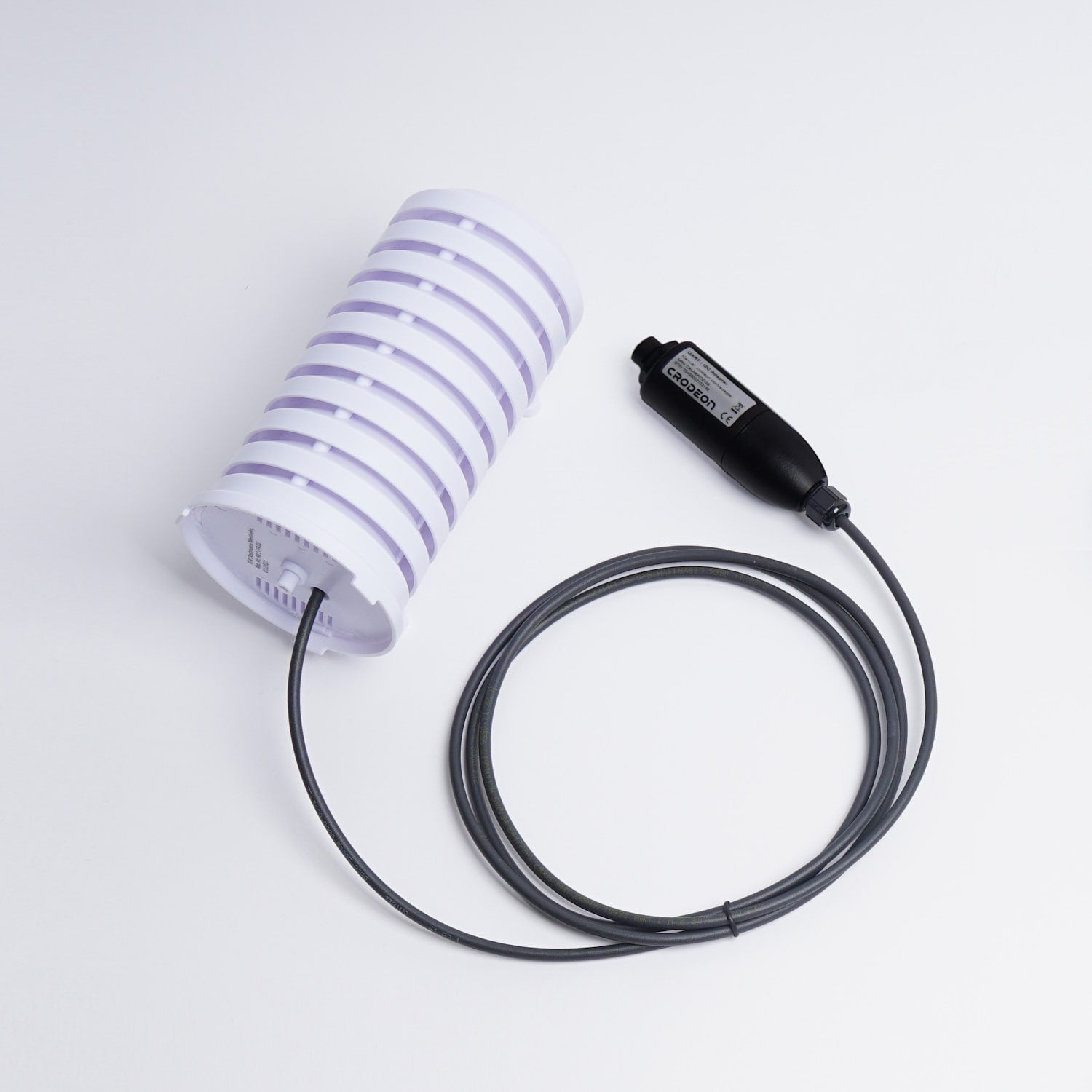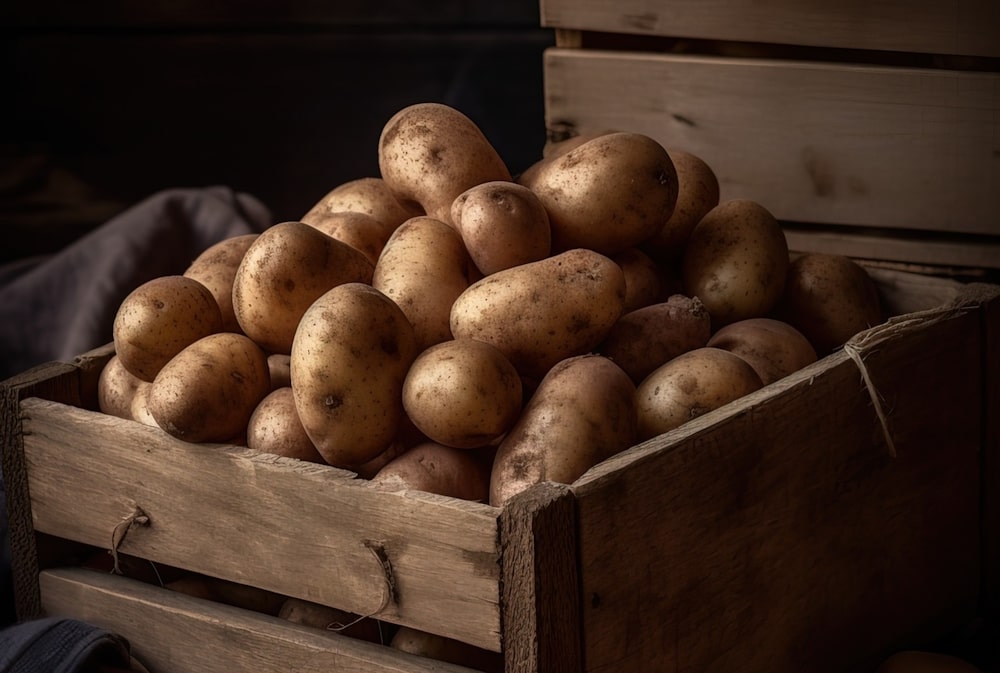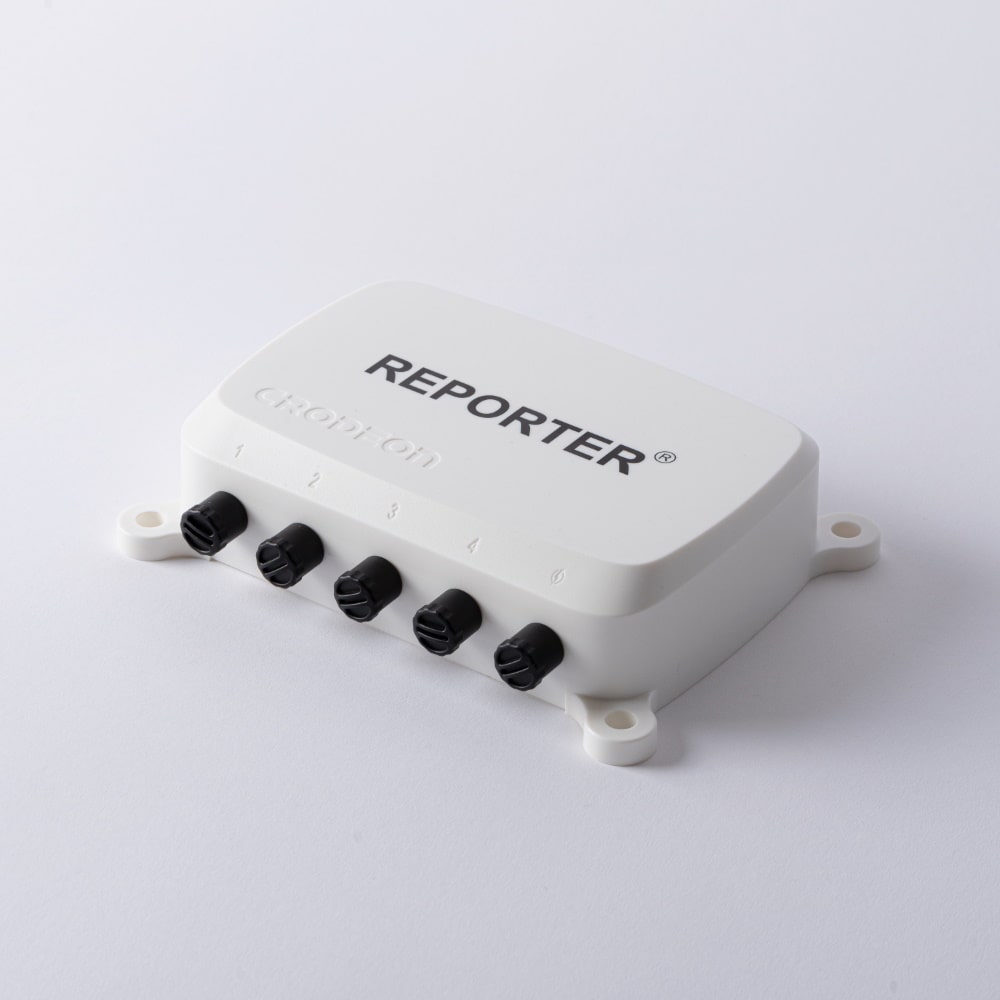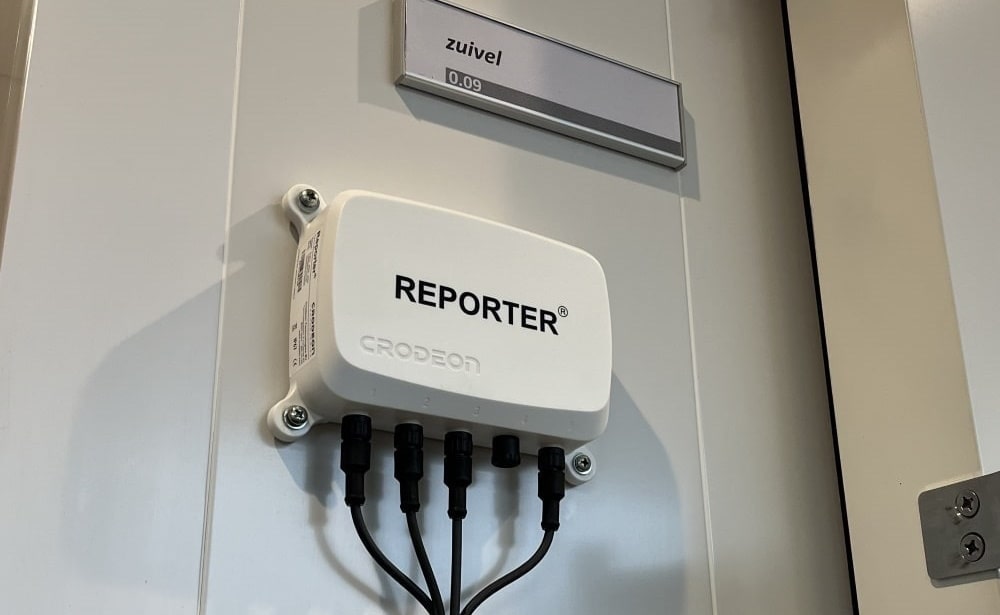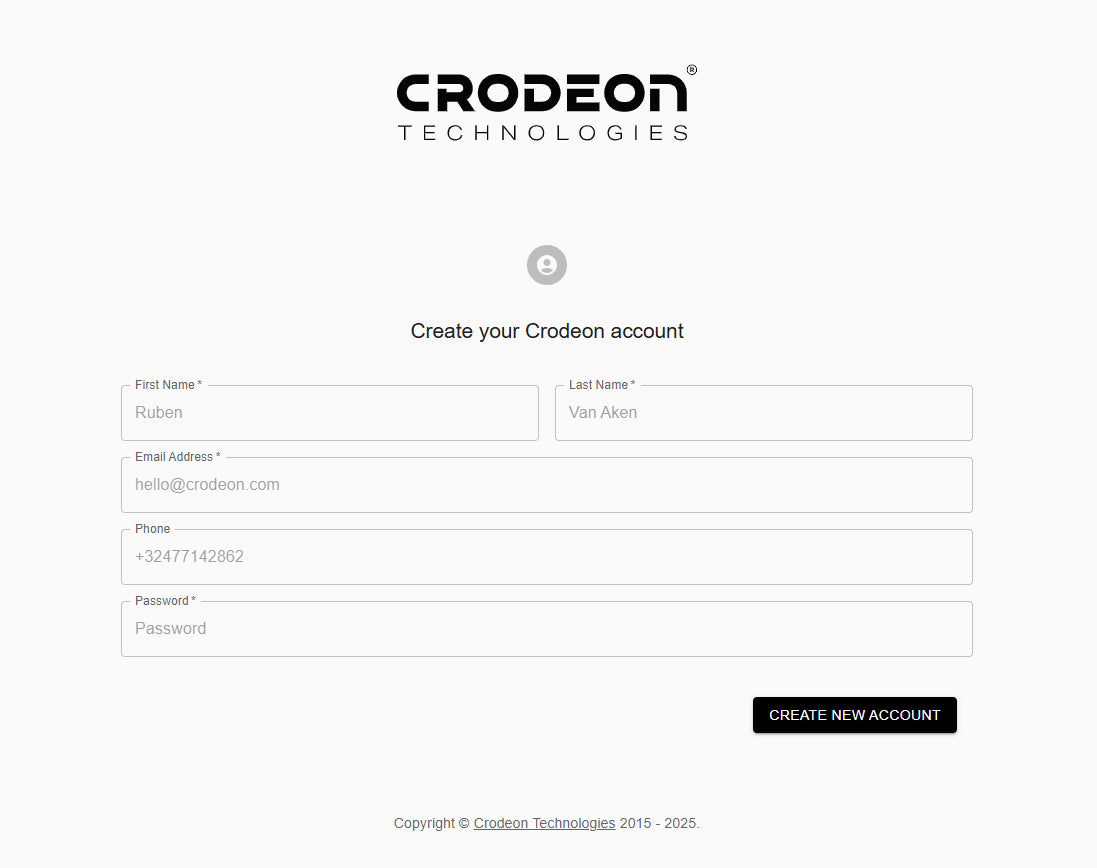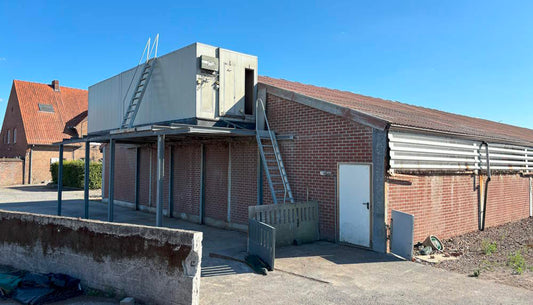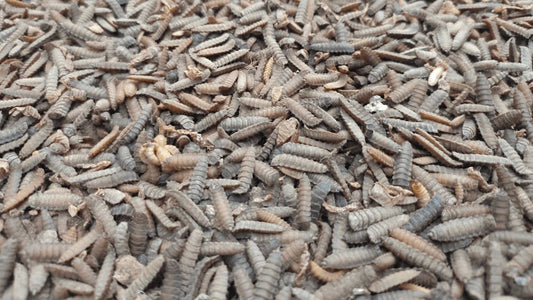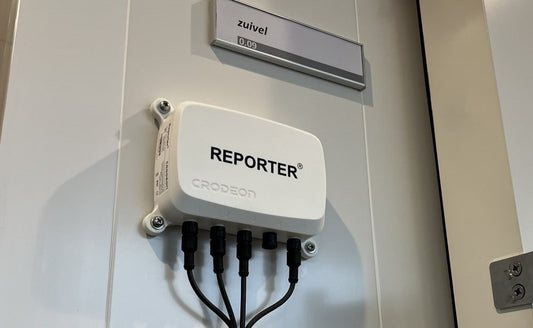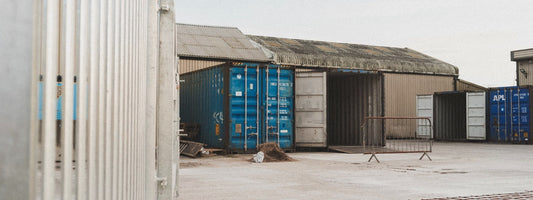How Bert gets the best deal for his onions by using a smart storage system
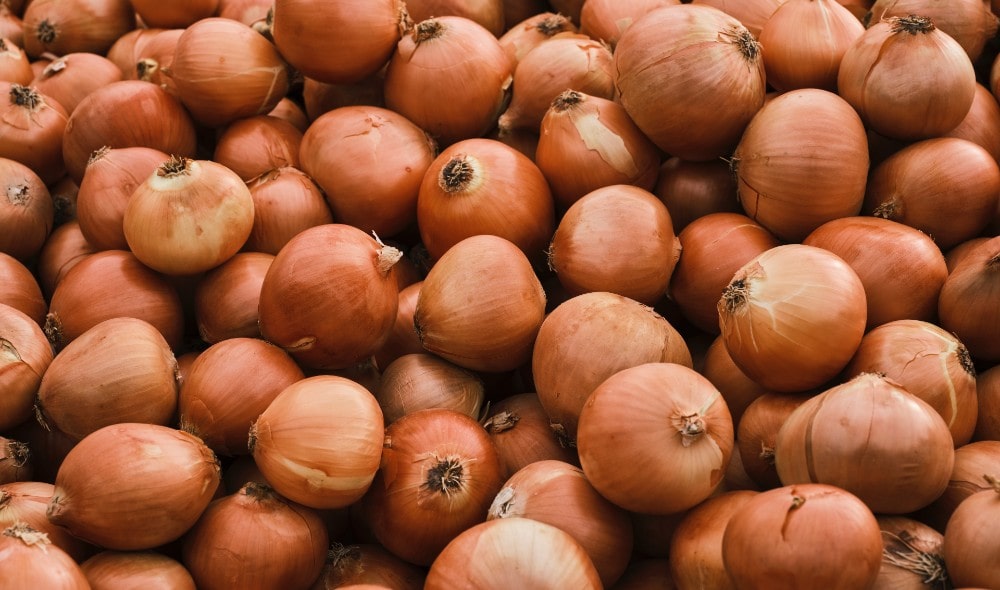
In the onion business, storage computers are widely used in storage sheds. However, installing such a system is costly and very complicated in an existing warehouse.
Bert Pauwels from Stabroek (Belgium) decided to replicate such a monitoring system himself for his storage shed. As he has a relatively small storage area and focuses mainly on short storage, he did not think it was worth investing in such an expensive system.
Why monitoring saves Bert several thousand euros per year
Bert Pauwels grows onions and potatoes. After harvesting, the vegetables need to be stored so they can reach the shops fresh. Of course, the onions have to be stored in the best possible way so that the quality is preserved and Bert can get a good price for his product.
For onions, it is very important that humidity and temperature remain constant. Otherwise, the skin discolours, making the onions look less attractive. This causes them to drop down in class, which means that the price you can get from the shop as a grower also plummets. You don't want that of course, because it would mean that a lot of your time and effort is wasted because you don't get the price you had hoped for.

How Bert monitors his onions
Bert uses several of our sensors to maintain the quality of his crop to keep his yield as high as possible.
Outdoors, he uses a weather station. The weather station combines several sensors: wind direction and speed, rain, temperature and relative humidity.
Bert uses temperature and humidity to see if it is a good time to let fresh outside air into his onion shed. He uses the rain sensor to check if it is not too wet to work on his land when it is time to plough the field or treat the crop. In turn, he uses the wind sensor to calculate how to position the irrigation reel for watering his plants.
Inside, Bert uses a temperature and humidity sensor to accurately monitor his onion room. Actually not the room, but mainly the pile of onions itself. In fact, Bert measures right in the middle of his pile of onions. Onions must be stored at 2-3°C and need a humidity of up to 60%.
"Such a pile of onions lies on a slatted floor and is 4-4.5m high. I mounted the sensor on a 2m long probe, a metal tube with a sharpened tip. I insert this into the pile to measure the state of the onions in the middle of the pile." He adds that some onions are impaled, of course, but that number is negligible.

 Bert also preserves his potatoes by sticking a relative humidity sensor in the middle of the pile.
Bert also preserves his potatoes by sticking a relative humidity sensor in the middle of the pile.
Bert ventilates his onion shed by paying attention to the outside temperature and humidity (through the weather station). If it is colder and less humid outside than in the shed, he lets air in. Especially during cold winter days, it is important that he does not let his onions freeze. He uses Reporter's alarm settings for this so that he gets an alarm notification when the temperature in the shed threatens to get too cold.
He tells us that cold air is also dry and dehydrating. To control the ventilation, Bert uses the relay control module. This allows him to open or close the inlet and outlet valves of his ventilation with a simple push of a button. If the outside air does not meet conservation requirements, Bert recirculates the inside air. He then sends the warm air from the top of the shed back down. This air is blown under the slatted floor and thus rises back up along the pile of onions.
"The lower the humidity is among the onions, the better, but usually it comes down to 50-60%. You definitely have to be careful not to over-ventilate because you are also draining the moisture from your onions. That way you ruin your own yield. You can literally see it evaporate". Bert told us he had already put this to the test. He had put a 25kg bag of onions in the middle of a pile, after a few months the bag weighed only 23kg. A decrease of 8%. So it turns out that over-ventilation has disastrous consequences for onion growers who get paid per kg.

Increasing yield with a remote monitoring system
It's a fragile balance that Bert has to keep, but he still succeeds. Too moist results in discoloured onions that decrease in value. Too dry causes the onions themselves to dry out, and yes, less kg = less money.
Bert further demonstrated his expertise in onion storage when he installed Reporter and sensors to his liking. Without having to make any complicated tweaks or having any knowledge of electricity or programming himself. This proves once again how easy and multi-purpose Reporter really is.
The nice thing about Reporter is that once everything is installed (which goes very smoothly, by the way), you can monitor your storage shed 24/7. Even if you are on the other side of the world. Reporter sends measurements to the cloud (Crodeon Dashboard) up to every half a minute where you can control everything through your browser on your smartphone, tablet or PC. Check the temperature, turn on ventilation or change an alarm setting: everything is done digitally.

"Practical and truly plug & play"
We always call our Reporter 'plug & play' and we say that really anyone can install it. It is nice when a customer once again confirms this. Bert installed Reporter himself and was (and is) very satisfied with the system.
"It really is plug & play, you don't even need to have knowledge about electricity for this. That truly is Reporter's strong point. I also think it's very practical that everything is online. When I need to check something, I just go to the Crodeon Dashboard on my smartphone. There I can find everything in terms of information. This also means I don't have to go looking for a paper manual that I probably already lost a long time ago..."
Bert finds Reporter practical and easy. He also notes that setting and disabling alarm notifications is smooth and simple. He uses these alarm notifications to get an alert when the temperature is too low or the humidity too high. He thinks the relay output module he uses to control the inlet and outlet valve is very convenient. He can rename all the commands and sensors himself as he wishes, which keeps his monitoring system clear and organised for him.
"I really am very satisfied" Bert added, and when a customer is satisfied, so are we!

Start monitoring like a pro
Do you also have a project where you'd need monitoring through sensors? Would you like to realise this project yourself by using our simple do-it-yourself sensor module? Contact us or have a look around our webshop. We will gladly help you get started!
Continue reading:

